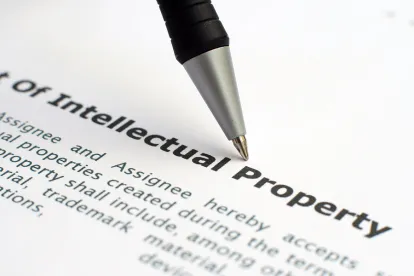When considering a request for injunctive relief, courts historically presumed trademark owners had suffered irreparable harm upon a showing of likely confusion. This changed in 2006, as a result of the Supreme Court’s decision in eBay, Inc. v. MercExchange, 547 U.S. 388 (2006). Therein, the Court ruled that patent owners were not entitled to this presumption, and instead, must prove irreparable harm to obtain an injunction. Id. at 392.
Following eBay, most circuit courts applied eBay to trademark cases as well. Some were explicit, with the Third, Ninth, and Eleventh Circuit Court of Appeals requiring trademark owners to prove irreparable harm. See Ferring Pharm., Inc. v. Watson Pharm., Inc., 765 F.3d 205, 217 (3d Cir. 2014) (“a party seeking a preliminary injunction in a Lanham Act case is not entitled to a presumption of irreparable harm but rather is required to demonstrate that she is likely to suffer irreparable harm if an injunction is not granted.”); Herb Reed Enters., LLC v. Fla. Entm’t Mgmt., Inc., 736 F.3d 1239, 1249 (9th Cir. 2013) (“We now join other circuits in holding that the eBay principle—that a plaintiff must establish irreparable harm—applies to a preliminary injunction in a trademark infringement case.”); N. Am. Med. Corp. v. Axiom Worldwide, Inc., 522 F.3d 1211, 1228–29 (11th Cir. 2008) (“Because the language of the Lanham Act — granting federal courts the power to grant injunctions ‘according to the principles of equity and upon such terms as the court may deem reasonable’ — is so similar to the language of the Patent Act, we conclude that the Supreme Court’s eBay case is applicable to the instant case.”).
Other circuits left the issue unresolved, with the issue squarely addressed at only the district court level. Those courts overwhelmingly followed the Third, Ninth, and Eleventh Circuits’ approach. See, e.g., Swarovski Aktiengesellschaft v. Building No. 19, Inc., 704 F.3d 44, 53–54 (1st Cir. 2013) (noting the First Circuit had “so far declined to address” eBay’s implication in trademark disputes); Great Healthworks, Inc. v. E.I. Salud Nat., LLC, No. 17-1774 (ADC), 2017 U.S. Dist. LEXIS 89986, at *3 (D.P.R. June 9, 2017) (“Although the First Circuit Court of Appeals has not yet resolved whether the presumption is still valid, this Court has previously stated — and today affirms - that it will not presume irreparable harm.”); Salinger v. Colting, 607 F.3d 68, 78 n.7 (2d Cir. 2010) (suggesting eBay would apply with “equal force to an injunction in any type of case” while extending its holding to copyright cases only) (emphasis in original); U.S. Polo Ass’n v. PRL USA Holdings, Inc., 800 F. Supp. 2d 515, 540 (S.D.N.Y. 2011) (“In light of Salinger[] . . . the presumption of irreparable injury in trademark cases is no longer appropriate.”); Ronaldo Designer Jewelry, Inc. v. Cox, No. 1:17-CV-2-DMB, 2017 U.S. Dist. LEXIS 143047, at *25–26 (N.D. Miss. Sep. 5, 2017) (“While the Fifth Circuit has not expressly addressed eBay, . . . the Court concludes that a presumption of irreparable harm in a Lanham Act case is contrary to eBay and is, therefore, improper.”); Park Ridge Sports v. Park Ridge Travel Falcons, No. 20 C 2244, 2020 U.S. Dist. LEXIS 200094, at *32 n.2 (N.D. Ill. Aug. 20, 2020) (requiring a demonstration of irreparable harm even though “[t]he Seventh Circuit has not addressed whether eBay applies to Lanham Act cases”); TrueNorth Cos., LC v. TrueNorth Warranty Plans of N. Am., LLC, 353 F. Supp. 3d 788, 801 (N.D. Iowa 2018) (“Without additional guidance from the Eighth Circuit on this issue, I find it prudent to consider irreparable harm under the traditional analysis (requiring plaintiff to show more than a possibility of harm), without allowing for a presumption based on likelihood of success.”); Dalkita, Inc. v. Distilling Craft, LLC, 356 F. Supp. 3d 1125, 1133 (D. Colo. 2018) (“The Court joins other courts in this district in finding that eBay abrogated the presumption of irreparable harm traditionally applied in trademark infringement cases.”).
However, a few outliers remained. Of all the circuits, the Sixth came closest to preserving, after eBay, the presumption of irreparable harm flowing from a showing of likely confusion. See CFE Racing Prods. v. BMF Wheels, Inc., 793 F.3d 571, 596 (6th Cir. 2015) (observing that irreparable harm exists in a trademark case where a party shows that it will “lose control” of its reputation); Lucky’s Detroit, LLC v. Double L, Inc., 533 F. App’x 553, 555, 560 (6th Cir. 2013) (affirming grant of permanent injunction, and concluding that “there is sufficient evidence that customers will be confused by both parties’ use of the marks, and thus [the trademark owner] made a sufficient showing that it would suffer irreparable harm if [counter-defendant] continues to use the mark”). Similarly, Fourth Circuit districts courts, and the District Court for District of Columbia, generally declined to apply eBay’s holding to trademark cases. See George Sink PA Injury Lawyers v. George Sink II Law Firm LLC, No. 2:19-cv-01206-DCN, 2019 U.S. Dist. LEXIS 204840, at *26 (D.S.C. Nov. 26, 2019) (declining to apply eBay in the context of trademark infringement, noting eBay is “not applicable to cases of trademark infringement and do[es] not provide this court with a valid basis to depart from well-settled law”); Entrepreneur Media, Inc. v. JMD Entm't Grp., LLC, 958 F. Supp. 2d 588, 596 (D. Md. 2013) (citing pre-eBay case and affirming “[t]he Fourth Circuit has held that irreparable injury regularly follows from trademark infringement.”); Hanley-Wood LLC v. Hanley Wood LLC, 783 F. Supp. 2d 147, 151 (D.D.C. 2011) (citing pre-eBay caselaw and affirming that “[g]enerally, trademark infringement, by its very nature, carries a presumption of harm.”). It does not appear the Federal Circuit addressed eBay’s application in the trademark context.
Applying eBay to trademark cases posed a significant hurdle for trademark owners seeking preliminary injunctions (or temporary restraining orders). Often, plaintiffs found it difficult to prove irreparable harm, which is unsurprising considering the liability standard is “likelihood of confusion.”
Enter the Trademark Modernization Act, passed as a component within the last appropriations bill signed by President Trump. The Trademark Modernization Act, iv. Q, Tit. II, Subtit. B, §§ 221–228 (Dec. 27, 2020) (TMA) revived this presumption by reviving explicitly the presumption of irreparable harm. Specifically, the TMA amended Section 34(a) of the Lanham Act, 15 U.S.C. § 1116(a), with the addition of the following language:
A plaintiff seeking any such injunction shall be entitled to a rebuttable presumption of irreparable harm upon a finding of a violation identified in this subsection in the case of a motion for a permanent injunction or upon a finding of likelihood of success on the merits for a violation identified in this subsection in the case of a motion for a preliminary injunction or temporary restraining order.
Id. § 226(a). This provision became effective upon enactment of the TMA, Dec. 27, 2020.
At this still-early date, the effect of the TMA on trademark cases, and in particular, the ability of trademark owners to obtain preliminary injunctions, largely remains to be seen. The circuits that may experience the biggest swing are those that unequivocally held eBay required trademark owners to affirmatively prove irreparable harm—i.e., the Third, Ninth, and Eleventh circuits. The chart below summarizes preliminary injunction outcomes in trademark cases in those circuits before and after enactment of the TMA.
|
Period |
Circuit* |
||
|
Third |
Ninth |
Eleventh |
|
|
After eBay and prior to the TMA (Jan. 1, 2009–Dec. 27, 2020) |
231 preliminary injunction requests: 139 granted; 92 denied (60% granted) |
737 preliminary injunction requests: 483 granted; 254 denied (66% granted) |
923 preliminary injunction requests: 797 granted; 126 denied (86% granted) |
|
Post-TMA (Dec. 28, 2020–current) |
3 preliminary injunction requests: 3 granted; 0 denied (100% granted) |
1 preliminary injunction requests: 1 granted; 0 denied (100% granted) |
15 preliminary injunction requests: 15 granted; 0 denied (100% granted) |
|
* Results developed from targeted searches of district court rulings on Lex Machina, the data from which extends back to January 1, 2009. The search encompassed trademark cases, filed during the above referenced time frames, in which a preliminary injunction was sought as remedy. |
|||
In sum, since the enactment of the TMA, all three circuits have seen an increase in the percentage of preliminary injunctions granted. Although this data is extremely limited, it suggests that the TMA is having the desired effect, with trademark owners facing a lower burden of proof when seeking a preliminary injunction.




 />i
/>i

